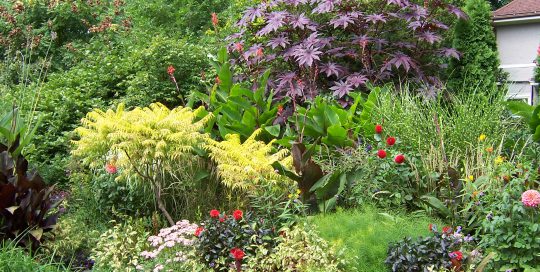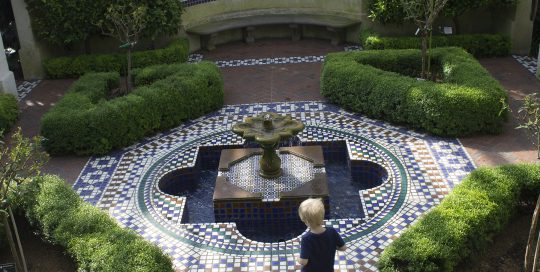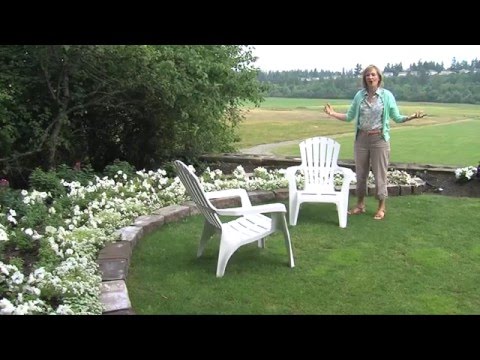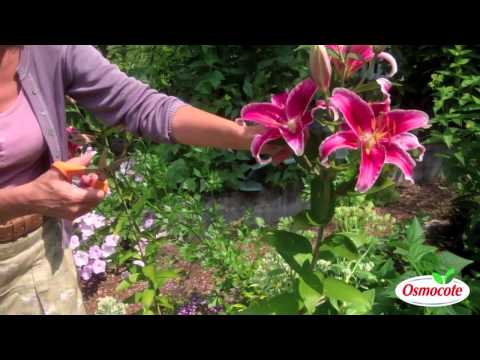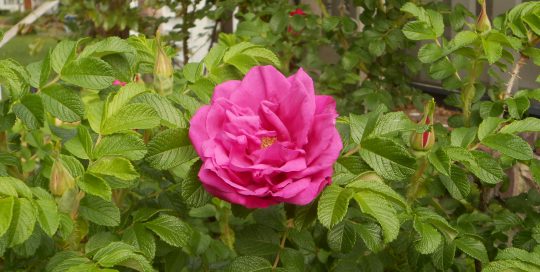The Path to the Front Door
The path to the front door became wider as well. Scott recommended a 4- to 5-foot wide path with a 2-foot-wide border of annuals on each side. The wide path would allow a couple to walk side-by-side and the woman’s ankle-length dress would not brush against the flowers. A wide, welcoming path to the front entry is still the mark of a good design.
The Snowball Bush
The Victorians were also fond of “specimen” trees — unusual or impressive plants grown as a focus of interest. Specimen trees could have variegated leaves or a weeping form like a willow or red leaves. Victorians especially liked snowballs in summer. The snowball bush is a term often used for hydrangeas (Hydrangea spp.) and viburnums (Viburnum spp.). They share the name snowball bush because of their large, white flower heads, but hydrangeas and viburnums are different.
Cottage Gardens
Like houses, cars and clothes, popular garden designs change with time. As carpet beds began to fade from fashion, cottage gardens filled with annuals, perennials and flowering vines began appearing in paintings, on women’s magazine covers and in seed catalogs. Unlike carpet beds with their strict designs and tightly controlled plantings, cottage gardens were the exact opposite—loose, lush, overflowing and often flamboyant. Some annual flowers self-sowed — the seeds fell into the soil and the plants popped up anywhere, so the result was very informal. Foxgloves, hollyhocks, bellflower, lavender, pinks, daisies and annual vines, such as kiss-me-over-the-garden-gate and morning glories, were staples of the cottage garden.
Fragrance Matters
Fragrance was very important, too. For example, by1900, there were some 250 varieties of sweet peas. Carnations, roses, peonies, sweet alyssum and lilies were star players in the fragrant garden. Some garden designers at the time also touted the making of one-color beds and borders, such as the all-blue garden or the all-red garden of annuals and perennials.
Moon Gardens, Seriously
One of my favorite Victorian theme gardens is the moon garden — a garden that focused on all white flowers. The moon garden might contain fragrant lilies, like Casa Blanca, nicotiana and datura and plants with silver or variegated leaves. As its name suggests, enjoy the moon garden at dusk and into the evening. Moonflower vine (Ipomoea alba) is an annual fast-growing vine with white, fragrant trumpet flowers that unfurl at dusk. They are easy to grow from seed. Next time you’re in your garden at dusk, notice how all the bright colors — the orange, reds and purples fade away while any light-colored or white flowers begin to glow even on a cloudy night. And remember, what’s old is new again.
Lessons from the Victorian Garden Era
- Make the main path to your front door at least four feet wide if possible. Five feet is even better.
- Create a moon garden with white or pale yellow flowers and silver or variegated foliage near an entryway, deck or patio — somewhere that can be enjoyed in the evening.
- Add some fragrance. Many shrubs, like Judd viburnum, offer snowball-shaped flowers with a scent that can only be described as almond-vanilla.
- Choose embellishments (planters, benches, arbors, fencing material, etc.) in a style, color or material to enhance the architecture of your home. If you have a mid-century contemporary ranch, a Victorian urn is not quite the best fit.
- Evaluate your foundation plantings. Does your house say “1910,” but the foundation planting suggests “1955?” You get the idea.
- Check out the sight lines from your windows. Would a focal point like a sun dial, bird bath or a specimen plant to dress up the view?
- Consider how much time you have for maintenance. Cottage gardens, for example can be extremely high maintenance. You might get a similar effect using more flowering shrubs and future perennials.
Web Resources:
The Garden History Society: http://www.gardenhistorysociety.org/aboutus/links/
Archives of American Gardens: http://sirismm.si.edu/siris/aagtop.htm
Old-House Gardens www.oldhousegardens.com
Daffodils in American Gardens 1733-1940: www.sc.edu/uscpress/books/2015/7401.html

